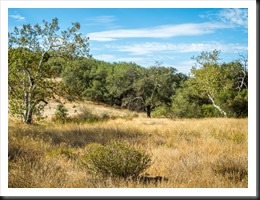If you’re a person who’s interested in just taking pictures and don’t want to be bothered with all the technical details, you are probably photographing with your camera set to automatic mode. Often times automatic mode is indicated by a green box. Probably the handiest feature of automatic mode is that the camera makes all the decisions for you. All you have to think about is getting the people you’re photographing in the frame and pressing the shutter. The camera does everything else.
But the problem is that the camera doesn’t always get it right. Often times it will overexpose parts of the image making them look washed out. But there’s a simple way to avoid this without mastering all the complicated technical details of shooting in manual mode. And that is P mode.
Using P Mode
The P and P mode stands for Programmed Automatic. In P mode the camera allows you to make some of the decisions while it makes the rest. You get to choose whether or not to use flash, and set the ISO, exposure compensation and white balance. The camera sets the f-stop and shutter speed.
Let’s take these controls one by one. Let’s start with flash. You can decide whether you want to use flash or not. If you’re shooting in bright daylight or even on a cloudy day you probably don’t need flash. But if it’s a little darker you can always choose to turn the flash on. If you don’t know how to turn your flash on or off you’ll need to consult your camera’s manual.
Setting ISO
ISO was another setting you can adjust. What is ISO? It adjusts the camera’s sensitivity to light. What do I mean by that? Well, if you’re shooting on a bright day there’s plenty of light to go around so you can set the sensitivity way down. I prefer to set the ISO to 100. The lower the number, the lower the sensitivity. Also, the lower the number, the better the picture quality. However if it’s dark I set the ISO to 200, 400, or maybe even 800. Every time you increase the ISO you lose a little bit of picture quality. Generally at ISO 800 the picture quality is going to be compromised quite a bit. So that’s why like to set the ISO as low as possible.
Exposure Compensation
Exposure compensation is another adjustment you can make. Now that may sound fairly complicated but the idea is really quite simple. The camera uses its built in light meter to determine what it thinks the exposure should be. In other words, the camera sets the f-stop and the shutter speed. But sometimes the picture ends up being too light, too washed out. The picture would be better if it was a little darker. And with exposure compensation you can tell the camera to darken the image. On the other hand, if the exposure that the camera picked created an image that was too dark, you can lighten it using exposure compensation.
So to darken an image you use a negative exposure compensation. Now, the units are EV. Usually your camera will allow you to do plus or minus 2 EV of exposure compensation. That’s the equivalent of two stops in either direction. You can also use fractions of an EV. The setting I prefer when I’m photographing in P mode is to underexpose the image just a little bit. I use a -2/3 EV exposure compensation. It darkens the image just enough to handle most overexposure problems. Again, if you don’t know how to adjust exposure compensation check the manual.
 |
 |
 |
 |
 |
|
-2 EV |
-1 EV |
0EV |
+1EV |
+2 EV |
White Balance
Finally there is white balance. If you’ve ever looked out the window of your home at twilight you’ll be struck by how warm the interior looks and how cool it looks outside. That’s because the interior light has stronger yellows and oranges while the exterior light is more blue. White balance is a way to take these color biases into account to make more natural looking color. There are several different settings for white balance-daylight, cloudy, open shade, tungsten, florescent and automatic. Each of these white balance settings compensate for the color cast in different kinds of light. For example, cloudy light tends to be a little blue so the cloudy white balance will compensate for that by making the image a bit more yellow. Tungsten light tends to be orange so the tungsten white balance will compensate for that by making it more blue.
Many people choose auto white balance in which the camera makes its best guess as to the color cast of the light and compensates accordingly. I have found that in certain circumstances the camera gets it wrong-by quite a bit. So I prefer to use daylight all the time. Well, practically all the time. There are a few exceptions but not many. So for all practical purposes, I always use daylight.
Summary
So let’s sum it up. When I use P mode I set the ISO as low as possible (usually 100), I set exposure compensation to -2/3 EV and I set white balance to daylight. That lets me focus on the photograph and not the technical details of exposure. Now you may ask if I do this all the time and my answer is “No.” With my big Canon I use one of the more manual modes – Aperture priority. But with my point-and-shoot, my little Canon, these are the settings I use.
So give it a try. If you been photographing in auto mode try out P mode with these suggested settings that I’ve given you. I think you’ll be pleasantly surprised with the results.
We do photography workshops. Come on out and join us. Click here to check us out.
(1998)

